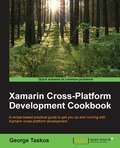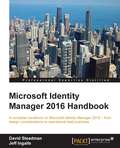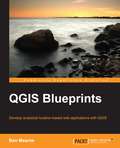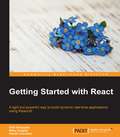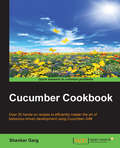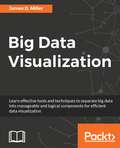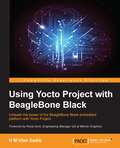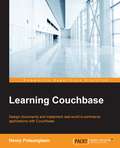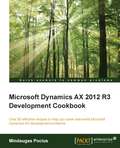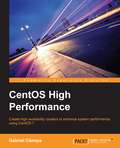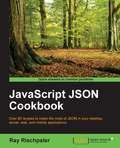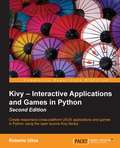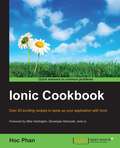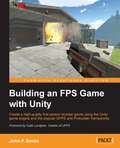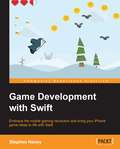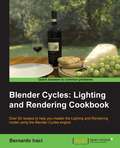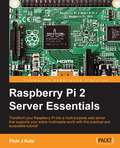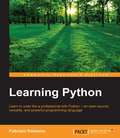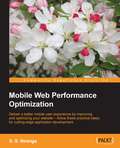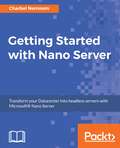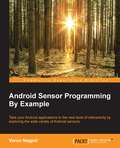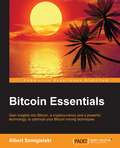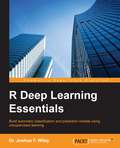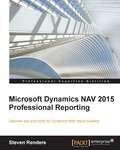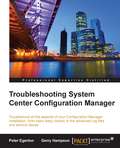- Table View
- List View
Citrix XenDesktop® Cookbook - Third Edition
by Gaspare A. SilvestriOver 40 engaging recipes that will help you implement a full-featured XenDesktop® 7.6 architecture and its main satellite components About This Book * Implement, configure, and optimize the migration from a physical to a VDI architecture using XenDesktop 7.6 * Publish desktops and applications to the end user devices, optimizing their performance and increasing the security for the delivered resources * A pragmatic guide that helps you to explore the XenDesktop 7.6 architecture and its related components to implement a service-oriented architecture based on the Citrix FlexCast approach Who This Book Is For If you are a system administrator or an experienced IT professional who wants to refer to a centralized container of procedures and advanced tasks in XenDesktop, this is the book for you. Experience of the virtualized environment and an understanding of the general concepts of desktop virtualization (VDI) are required. What You Will Learn * Upgrade from XenDesktop 5.6 / 7.x to XenDesktop 7.6 * Configure and deploy virtual machines for XenDesktop 7.6 * Perform configuration and optimization operations for desktop and server OS images for future deployments * Plan and configure XenDesktop user experience * Execute desktop environment administration tasks, including catalog creation, power management, and resource allocation * Understand how to publish the hosted applications, Local Access Apps (LAA), and applications using Microsoft App-V * Work with XenDesktop PowerShell to reduce the time required to perform the management tasks by the creation of the PowerShell scripts * Implement the two-factor hardware and software authentication for XenDesktop * Install and configure Citrix Netscaler Gateway 10.5 and Citrix XenMobile 10 to improve the quality, the performance, and the manageability of your Virtual Desktop Infrastructure (VDI) architecture In Detail In the era of Bring Your Own Device (BYOD) and consecration of the mobile devices, Citrix has strengthened its position in this market, powering its desktop and application virtualization platforms, integrating the ability to publish virtual and physical desktops with the capability to assign applications and contents in a secure manner on any device, anywhere, more than previous versions. The XenDesktop 7.6 version is a more integrated platform, which permits the use and interaction with mobility and cloud platforms leaders in the market. This book will help you understand how to implement, configure, and optimize migration from a physical to a VDI architecture, moving from a standard application approach to a centralized and more secure way to assign and release resources to the end users. The book begins with the upgrade and installation procedures for the core infrastructural components, along with an explanation of how to deploy and optimize procedures for desktop virtual machines. Moving on, you will perform desktop and applications deployment through the XenDesktop core plus integrated publishing platforms, such as Microsoft App-V. Finally, the book explains how to install and configure important collateral platforms such as the Citrix Netscaler, Citrix CloudBridge and Citrix XenMobile platforms, along with execution of the most advanced activities and configurations. Style and approach This book is a step-by-step course that includes standard and high-level tasks oriented to deploy a full-functioning Citrix environment. This practical approach is based on both GUI and command-line operations, which gives IT professionals an alternative on the way to operate, where possible.
Microsoft Identity Manager 2016 Handbook
by Jeff Ingalls David SteadmanA complete handbook on Microsoft Identity Manager 2016 - from design considerations to operational best practices About This Book * Get to grips with the basics of identity management and get acquainted with the MIM components and functionalities * Discover the newly-introduced product features and how they can help your organization * A step-by-step guide to enhance your foundational skills in using Microsoft Identity Manager from those who have taught and supported large and small enterprise customers Who This Book Is For If you are an architect or a developer who wants to deploy, manage, and operate Microsoft Identity Manager 2016, then this book is for you. This book will also help the technical decision makers who want to improve their knowledge of Microsoft Identity Manager 2016. A basic understanding of Microsoft-based infrastructure using Active Directory is expected. Identity management beginners and experts alike will be able to apply the examples and scenarios to solve real-world customer problems. What You Will Learn * Install MIM components * Find out about the MIM synchronization, its configuration settings, and advantages * Get to grips with the MIM service capabilities and develop custom activities * Use the MIM Portal to provision and manage an account * Mitigate access escalation and lateral movement risks using privileged access management * Configure client certificate management and its detailed permission model * Troubleshoot MIM components by enabling logging and reviewing logs * Back up and restore the MIM 2015 configuration * Discover more about periodic purging and the coding best practices In Detail Microsoft Identity Manager 2016 is Microsoft's solution to identity management. When fully installed, the product utilizes SQL, SharePoint, IIS, web services, the .NET Framework, and SCSM to name a few, allowing it to be customized to meet nearly every business requirement. The book is divided into 15 chapters and begins with an overview of the product, what it does, and what it does not do. To better understand the concepts in MIM, we introduce a fictitious company and their problems and goals, then build an identity solutions to fit those goals. Over the course of this book, we cover topics such as MIM installation and configuration, user and group management options, self-service solutions, role-based access control, reducing security threats, and finally operational troubleshooting and best practices. By the end of this book, you will have gained the necessary skills to deploy, manage and operate Microsoft Identity Manager 2016 to meet your business requirements and solve real-world customer problems. Style and approach The concepts in the book are explained and illustrated with the help of screenshots as much as possible. We strive for readability and provide you with step-by-step instructions on the installation, configuration, and operation of the product. Throughout the book, you will be provided on-the-field knowledge that you won't get from whitepapers and help files.
QGIS Blueprints
by Ben MearnsDevelop analytical location-based web applications with QGIS About This Book * Tame geographic information workflows with QGIS blueprints for smart web applications * Create geographic web applications using QGIS and free/open source software * Blueprints provide real-world applications covering many use cases Who This Book Is For This book encompasses relatively experienced GIS developers who have a strong grounding in the fundamentals of GIS development. They will have used QGIS before, but are looking to understand how to develop more complex, layered map applications that expose various data sets, utilize different visualizations, and are consumable (usable) by end users What You Will Learn * Review geographic information principles and the application of these principles in the QGIS free/open source ecosystem * Perform advanced analysis with site selection, hydrologic, and topological networks * Build performant web applications by tile caching and generating static assets * Provide collaborative editing capabilities for your team or community * Develop custom and dynamic analysis and visualization capabilities * Select the best components from desktop and web, for your use case * Integrate it with social media and crowdsourcing In Detail QGIS, the world's most popular free/open source desktop geographic information system software, enables a wide variety of use cases involving location - previously only available through expensive specialized commercial software. However, designing and executing a multi-tiered project from scratch on this complex ecosystem remains a significant challenge. This book starts with a primer on QGIS and closely related data, software, and systems. We'll guide you through six use-case blueprints for geographic web applications. Each blueprint boils down a complex workflow into steps you can follow to reduce time lost to trial and error. By the end of this book readers should be able to build complex layered applications that visualize multiple data sets, employing different types of visualization, and give end users the ability to interact with and manipulate this data for the purpose of analysis. Style and approach This is a comprehensive guide to the application of QGIS and free/open source software in creating web applications from analysis. Step-by-step blueprints guide the reader through analytical and web development topics and designs.
Getting Started with React
by Danillo Corvalan Doel Sengupta Manu SinghalA light but powerful way to build dynamic real-time applications using ReactJS About This Book * Learn how to develop powerful JavaScript applications using ReactJS * Integrate a React-based app with an external API (Facebook login) while using React components, with the Facebook developer app * Implement the Reactive paradigm to build stateless and asynchronous apps with React Who This Book Is For This book is for any front-end web or mobile-app developer who wants to learn ReactJS. Knowledge of basic JavaScript will give you a good head start with the book. What You Will Learn * Understand the ReactJS basics through an overview * Install and create your first React component * Refactor the ReactJS component using JSX * Integrate your React application with the Facebook login and Graph API, then fetch data from your liked pages in Facebook and display them in a browser * Handle UI elements events with React, respond to users input, and create stateful components * Use some core lifecycle events for integration and find out about ES6 syntaxes in the React world * Understand the FLUX architecture and create an application using FLUX with React * Make a component more reusable with mixins and validation helpers and structure your components properly * Explore techniques to test your ReactJS code * Deploy your code using webpack and Gulp In Detail ReactJS, popularly known as the V (view) of the MVC architecture, was developed by the Facebook and Instagram developers. It follows a unidirectional data flow, virtual DOM, and DOM difference that are generously leveraged in order to increase the performance of the UI. Getting Started with React will help you implement the Reactive paradigm to build stateless and asynchronous apps with React. We will begin with an overview of ReactJS and its evolution over the years, followed by building a simple React component. We will then build the same react component with JSX syntax to demystify its usage. You will see how to configure the Facebook Graph API, get your likes list, and render it using React. Following this, we will break the UI into components and you'll learn how to establish communication between them and respond to users input/events in order to have the UI reflect their state. You'll also get to grips with the ES6 syntaxes. Moving ahead, we will delve into the FLUX and its architecture, which is used to build client-side web applications and complements React's composable view components by utilizing a unidirectional data flow. Towards the end, you'll find out how to make your components reusable, and test and deploy them into a production environment. Finally, we'll briefly touch on other topics such as React on the server side, Redux and some advanced concepts. Style and approach The book follows a step-by-step, practical, tutorial approach with examples that explain the key concepts of ReactJS. Each topic is sequentially explained and contextually placed to give sufficient details of ReactJS.
Cucumber Cookbook
by Shankar GargThis book is intended for business and development personnel who want to use Cucumber for behavior-driven development and test automation. Readers with some familiarity with Cucumber will find this book of most benefit. Since the main objective of this book is to create test automation frameworks, previous experience in automation will be helpful.
Big Data Visualization
by James MillerThis book is for data analysts or those with a basic knowledge of big data analysis who want to learn big data visualization in order to make their analysis more useful. You need sufficient knowledge of big data platform tools such as Hadoop and also some experience with programming languages such as R. This book will be great for those who are familiar with conventional data visualizations and now want to widen their horizon by exploring big data visualizations.
Using Yocto Project with BeagleBone Black
by H M SadiqThis book is ideal for system developers with knowledge and experience of embedded systems. Knowledge of BeagleBone Black is assumed, while no knowledge of Yocto Project build system is necessary.
Learning Couchbase
by Henry PotsangbamDesign documents and implement real world e-commerce applications with Couchbase About This Book * Get acquainted with Couchbase architecture and design your document-based data schema * Implement full text search using industry standard elastic search plugins * Develop critical and high performance applications using this hands-on tutorial guide Who This Book Is For If you are new to the NoSQL document system or have little or no experience in NoSQL development and administration and are planning to deploy Couchbase for your next project, then this book is for you. It would be helpful to have a bit of familiarity with Java. What You Will Learn * Get acquainted with the concept of NoSQL databases and configure your Couchbase database cluster * Maintain Couchbase effectively using the web-based administrative console with ease * Enable partition capabilities by making use of Buckets * Analyze important design considerations for maintaining relationship between various documents * Use Couchbase SDK Java API to store and retrieve document * Write views using map/reduce to retrieve documents efficiently * Get familiar with N1QL and how to use it in Java applications * Integrate Couchbase with Elasticsearch to implement full text search * Configure XDCR for disaster recovery and develop ecommerce application using Couchbase In Detail This book achieves its goal by taking up an end-to-end development structure, right from understanding NOSQL document design to implementing full fledged eCommerce application design using Couchbase as a backend. Starting with the architecture of Couchbase to get you up and running, this book quickly takes you through designing a NoSQL document and implementing highly scalable applications using Java API. You will then be introduced to document design and get to know the various ways to administer Couchbase. Followed by this, learn to store documents using bucket. Moving on, you will then learn to store, retrieve and delete documents using smart client base on Java API. You will then retrieve documents using SQL like syntax call N1QL. Next, you will learn how to write map reduce base views. Finally, you will configure XDCR for disaster recovery and implement an eCommerce application using Couchbase. Style and approach The book starts from absolute basics and slowly moves to more advanced topics ensuring at every step that all concepts and terms are understood by the reader to have complete understanding at every stage. Technical and complex terms are explained in clear and simple language, thus making this book a perfect companion for those who have started their journey to NoSQL using Couchbase
Microsoft Dynamics AX 2012 R3 Development Cookbook
by Mindaugas PociusIf you are a Dynamics AX developer who is primarily focused on delivering time-proven applications, then this book is for you. This book is focused more on people who are willing to raise their programming skills above the beginner level, and at the same time learn the functional aspects of Dynamics AX. Some Dynamics AX coding experience is expected.
CentOS High Performance
by Gabriel CanepaCreate high availability clusters to enhance system performance using CentOS 7 About This Book * Master the concepts of high performance and high availability to eliminate performance bottlenecks * Maximize the uptime of services running in a CentOS 7 cluster * A step-by-step guide that will provide knowledge of methods and approaches to optimize the performance of CentOS clusters Who This Book Is For This book is targeted at system administrators: those who want a detailed, step-by-step guide to learn how to set up a high-availability CentOS 7 cluster, and those who are looking for a reference book to help them learn or refresh the necessary skills to ensure their systems and respective resources are utilized optimally. No previous knowledge of high-availability systems is needed, though the reader is expected to have at least some degree of familiarity with any spin-off of the Fedora family of Linux distributions, preferably CentOS. What You Will Learn * Install a CentOS 7 cluster and network infrastructure * Configure firewall, networking, and clustering services and settings * Set up and test a HAC (high-availability cluster) to host an Apache web server and a MariaDB database server * Monitor performance and availability * Identify bottlenecks and troubleshoot issues * Improve performance and ensure high availability In Detail CentOS is the enterprise level Linux OS, which is 100% binary compatible to Red Hat Enterprise Linux (RHEL). It acts as a free alternative to RedHat's commercial Linux offering, with only a change in the branding. A high performance cluster consists in a group of computers that work together as one set parallel, hence minimizing or eliminating the downtime of critical services and enhancing the performance of the application. Starting with the basic principles of clustering, you will learn the necessary steps to install a cluster with two CentOS 7 servers. We will then set up and configure the basic required network infrastructure and clustering services. Further, you will learn how to take a proactive approach to the split-brain issue by configuring the failover and fencing of the cluster as a whole and the quorum of each node individually. Further, we will be setting up HAC and HPC clusters as a web server and a database server. You will also master the art of monitoring performance and availability, identifying bottlenecks, and exploring troubleshooting techniques. At the end of the book, you'll review performance-tuning techniques for the recently installed cluster, test performance using a payload simulation, and learn the necessary skills to ensure that the systems, and the corresponding resources and services, are being utilized to their best capacity. Style and approach An easy-to-follow and step-by-step guide with hands-on instructions to set up real-world simple cluster scenarios that will start you on the path to building more complex applications on your own.
JavaScript JSON Cookbook
by Ray RischpaterIf you're writing applications that move structured data from one place to another, this book is for you. This is especially true if you've been using XML to do the job because it's entirely possible that you could do much of the same work with less code and less data overhead in JSON. While the book's chapters make some distinction between the client and server sides of an application, it doesn't matter if you're a frontend, backend, or full-stack developer. The principles behind using JSON apply to both the client and the server, and in fact, developers who understand both sides of the equation generally craft the best applications.
Kivy – Interactive Applications and Games in Python - Second Edition
by Roberto UlloaIf you are a Python developer who wants to create exciting and dynamic UI/UX applications that are compatible with multiple platforms, then this is the book for you. No prior experience with Kivy is required, although you should be familiar with Python and have a fair understanding of software engineering concepts such as inheritance, classes, and instances.
Ionic Cookbook
by Hoc PhanOver 35 exciting recipes to spice up your application development with IonicAbout This BookLearn how to utilize the robust features of Ionic CLI and its framework to create, develop, and build your mobile appExplore new integrations with various Backend-as-a-Services, along with AngularJS modules, for creative solutionsUse out-of-the-box Ionic functionalities, customize existing components, and add new components with this comprehensive, step-by-step guideWho This Book Is ForIf you are a front-end developer and want to take advantage of your existing mobile application development skills to develop cross-platform mobile apps, this book is for you. You will build up your Ionic knowledge with in-depth recipes on Angular.js, Cordova, and Sass.What You Will LearnAuthenticate users using an e-mail password, Twitter, Facebook, Google+, and LinkedInRetrieve data and store it using FirebaseAccess native device functionalities such as a camera, contact list, e-mail, and maps using ngCordovaWork with localStorage and SQLite for persistent data access on the client sideCommunicate to and from your app using push notifications or SMSLeverage AngularJS events and Ionic-specific events to communicate across pages, controllers, and directivesCustomize the color and theme of your Ionic appCreate new custom directives as componentsCompile your app for iOS, Android, and Windows PhoneIn DetailThe world of mobile development is extremely fragmented with many platforms, frameworks, and technologies available. Ionic is intended to fill that gap, by enabling developers to build apps that have a native feel to them, using web technologies such as HTML, CSS, and AngularJS. Ionic makes it easy for front-end developers to become app developers. The framework provides superior performance with deep Cordova integration and a comprehensive set of tools for prototyping, backend support, and deployment.Ionic Cookbook takes you through the process of developing a cross-platform mobile app using just HTML5 and the JavaScript-based Ionic.You will start with an introduction to the CLI and then move on to building and running an app. You will explore common features of real-world mobile apps such as authenticating a user, and getting and saving data using either Firebase or Local Storage. Next, the book covers how Ionic integrates with Cordova to support native device features using ngCordova, and you will discover how to take advantage of existing modules around its ecosystem. You will also delve into advanced topics, including how to extend Ionic to create new components. Finally, the book will walk you through customizing the Ionic theme and building the app so that it can be deployed to all platforms.Style and approachThis book follows a recipe-based approach to cross-platform mobile app development, where each task is explained in a conversational and easy-to-follow style. Every topic explains individual features or components of Ionic, and provides extra details for readers to come up with custom solutions based on real-world applications.
Building an FPS Game with Unity
by John P. DoranCreate a high-quality first person shooter game using the Unity game engine and the popular UFPS and Probuilder frameworksAbout This BookLearn how to use Unity in conjunction with UFPS and ProBuilder to create a high-quality game quicklyCreate both interior and exterior environmentsA step-by step guide to building a project with clear examples and instructions to create a number of interesting scenariosWho This Book Is ForThis book is for those who want to create an FPS game in Unity and gain knowledge on how to customize it to be their very own. If you are familiar with the basics of Unity, you will have an easier time, but it should make it possible for someone with no prior experience to learn Unity at an accelerated pace.What You Will LearnUse UFPS to build custom weapons with custom meshes and behaviorsExplore level design as you prototype levels, making use of Prototype to build levels out quicklyBuild environments that are realistic as possible while keeping peak performance and repetitiveness downReview tips and tricks on how to create environments using both terrain for outdoor areas and a modular workflow for interiorsDevelop a number of different encounters that your players can fight against, from a simple turret enemy to complex AI characters from Shooter AIDiscover how to create unique objects such as exploding barrels and objects you can interact withCreate a custom GUI to help your game stand out from the crowdPackage your game for release, create an installer, and get your game out into the worldIn DetailUnity, available in free and pro versions, is one of the most popular third-party game engines available. It is a cross-platform game engine, making it easy to write your game once and then port it to PC, consoles, and even the web, making it a great choice for both indie and AAA developers.Building an FPS Game in Unity takes readers on an exploration of how to use Unity to create a 3D first person shooter (FPS) title, leveraging the powerful UFPS framework by VisionPunk and Prototype/ProBuilder 2.0 by ProCore3D.After some setting up, you will start by learning how to create custom weapons, prototype levels, create exterior and interior environments, and breathe life into our levels. We will then add polish to the levels. Finally, we will create a custom GUI and menus for our title to create a complete package.Style and approachAn easy-to-follow guide with each project containing step-by-step explanations, diagrams, screenshots, and downloadable material. Concepts in Unity and C# are explained as they are used and for the more inquisitive, there are more details on the concepts used with additional external resources to learn from.
Game Development with Swift
by Stephen HaneyIf you wish to create and publish fun iOS games using Swift, then this book is for you. You should be familiar with basic programming concepts. However, no prior game development or Apple ecosystem experience is required.
Blender 3D Incredible Machines
by Christopher KuhnDesign, model, and texture complex mechanical objects in Blender About This Book * Develop realistic and awesome machines for your 3D projects and animation films * Gain the ability to look at a piece of machinery in real life and then recreate it in Blender * Develop a comprehensive skill set covering key aspects of mechanical modeling Who This Book Is For This book is intended for consumers and hobbyists who are existing users of Blender 3D want to expand their capabilities by diving into machine modeling with Blender 3D. You are expected to have experience with basic Blender operations. What You Will Learn * Reacquaint yourself with Blender's modeling toolset * Practice fundamental skills that are applicable to a range of modeling projects * Know when and where to use various types of geometry--something that saves time in one instance will pose significant problems in another * Think ahead and plan your project out to significantly improve both quality and efficiency * Create models for freestyle use * Overcome challenging modeling problems * Create customized game models that can easily be exported to other formats. This is one of the most popular uses of Blender, and the results can be incorporated into game design! * Get comfortable with the start-to-finish process to create any type of hard surface model In Detail Blender 3D is one of the top pieces of 3D animation software. Machine modeling is an essential aspect of war games, space games, racing games, and animated action films. As the Blender software grows more powerful and popular, there is a demand to take your modeling skills to the next level. This book will cover all the topics you need to create professional models and renders. This book will help you develop a comprehensive skill set that covers the key aspects of mechanical modeling. Through this book, you will create many types of projects, including a pistol, spacecraft, robot, and a racer. We start by making a Sci-fi pistol, creating its basic shape and adding details to it. Moving on, you'll discover modeling techniques for larger objects such as a space craft and take a look at how different techniques are required for freestyle modeling. After this, we'll create the basic shapes for the robot and combine the meshes to create unified objects. We'll assign materials and explore the various options for freestyle rendering. We'll discuss techniques to build low-poly models, create a low-poly racer, and explain how they differ from the high poly models we created previously. By the end of this book, you will have mastered a workflow that you will be able to apply to your own creations. Style and approach This is an easy-to-follow book that is based around four concrete projects. Each topic is explained sequentially in the process of creating a model, and detailed explanations of the basic and advanced features are also included.
Raspberry Pi Server Essentials
by Piotr J. KulaThis is an engaging, easy to follow guide for developing a wide range of server projects with Raspberry Pi This book is targeted towards all Raspberry Pi enthusiasts who are interested in exploring the potential of Pi as a server. Even if you have no prior experience with the Raspberry Pi, you can pick up this book and develop a wide range of projects.
Learning Python
by Fabrizio RomanoLearn to code like a professional with Python - an open source, versatile and powerful programming language About This Book * Learn the fundamentals of programming with Python - one of the best languages ever created * Develop a strong set of programming skills that you will be able to express in any situation, on every platform, thanks to Python's portability * Create outstanding applications of all kind, from websites to scripting, and from GUIs to data science Who This Book Is For Python is the most popular introductory teaching language in U.S. top computer science universities, so if you are new to software development, or maybe you have little experience, and would like to start off on the right foot, then this language and this book are what you need. Its amazing design and portability will help you become productive regardless of the environment you choose to work with. What You Will Learn * Get Python up and running on Windows, Mac, and Linux in no time * Grasp the fundamental concepts of coding, along with the basics of data structures and control flow. * Write elegant, reusable, and efficient code in any situation * Understand when to use the functional or the object oriented programming approach * Create bulletproof, reliable software by writing tests to support your code * Explore examples of GUIs, scripting, data science and web applications * Learn to be independent, capable of fetching any resource you need, as well as dig deeper In Detail Learning Python has a dynamic and varied nature. It reads easily and lays a good foundation for those who are interested in digging deeper. It has a practical and example-oriented approach through which both the introductory and the advanced topics are explained. Starting with the fundamentals of programming and Python, it ends by exploring very different topics, like GUIs, web apps and data science. The book takes you all the way to creating a fully fledged application. The book begins by exploring the essentials of programming, data structures and teaches you how to manipulate them. It then moves on to controlling the flow of a program and writing reusable and error proof code. You will then explore different programming paradigms that will allow you to find the best approach to any situation, and also learn how to perform performance optimization as well as effective debugging. Throughout, the book steers you through the various types of applications, and it concludes with a complete mini website built upon all the concepts that you learned. Style and approach This book is an easy-to-follow guide that will take you from a novice to the proficient level at a comfortable pace, using a lot of simple but effective examples. Each topic is explained thoroughly, and pointers are left for the more inquisitive readers to dig deeper and expand their knowledge.
Mobile Web Performance Optimization
by S. S. NirangaDeliver a better mobile user experience by improving and optimizing your website - follow these practical steps for cutting-edge application development About This Book * Optimize your website or application for an improved mobile performance * Learn how to create lightweight, intuitive mobile UI and make sure it's supported by a robust application architecture * Find out how to improve the performance of your applications by asking the right design questions at each stage in the development workflow Who This Book Is For This book has been created for web developers who want to optimize their website for today's mobile users. If you understand just how important user experience is, this book is for you - it will help you throughout the entire optimization process. What You Will Learn * Learn the three pillars of mobile performance * Find out how to ask - and answer - crucial design questions such as 'mobile or responsive?' * Learn how to minify CSS and JavaScript for improved performance * Monitor and debug your website with the leading browser testing tools * Explore the impact of caching on performance - and improve it using JavaScript and CSS frameworks * Make third-party plugins your friend - avoid common issues and pitfalls In Detail With users increasingly accessing the web on mobile devices, it's crucial to make sure your website is built to seamlessly fit this radical change in user behavior. Mobile Web Performance Optimization is designed to help you do exactly that - it's been created to help you build fast, and mobile-user-friendly websites and applications. Featuring guidance through a range of techniques and tools essential to modern mobile development, this accessible guide will make sure you're delivering a seamless and intuitive experience for your website's users. Begin by exploring the fundamental components of mobile web design and website optimization, before learning how to put the concepts into practice. Featuring cross-platform solutions, insights on developing lightweight yet robust UI, and insights on how to successfully manage data, this application development book takes you through every stage in the development process - so you can be confident that you're asking the right questions and using the best tools in the most effective way. By the end, you'll understand implicitly what it means to 'build for performance'- you'll be a more confident developer, capable of building projects that adapt to a changing world. Style and approach This book takes a step-by-step approach to mobile web optimization, explaining the topics in a conversational and easy-to-follow style. Each topic includes detailed explanations of the basic and advanced features of mobile web optimization.
Getting Started with Windows Nano Server
by Charbel NemnomThis book opens up new potential for both developers and IT pros alike. The book is primarily for Windows Server administrators and IT Professionals who would like to deploy and administer Windows Nano Server within their organizations, and for developers who are trying to make maximum use of Windows Server Containers and Hyper-V Containers with Nano Servers.
Android Sensor Programming By Example
by Varun NagpalTake your Android applications to the next level of interactivity by exploring the wide variety of Android sensors About This Book * Get a thorough understanding of the fundamentals and framework of Android sensors. * Acquire knowledge of advance sensor programming, and learn how to connect and use sensors in external devices such as the Android Watch, Polar heart rate monitors, Adidas speed cells, and so on. * Learn from real-world sensor-based applications such as the Pedometer app to detect daily steps, the Driving app to detect driving events, and the Professional Fitness tracker app to track heart rate, weight, daily steps, calories burned, and so on. Who This Book Is For This book is targeted at Android developers who want to get a good understanding of sensors and write sensor-based applications, or who want to enhance their existing applications with additional sensor functionality. A basic knowledge of Android development is required What You Will Learn * Learn about sensor fundamentals, different types of sensors, and the sensor co-ordinate system * Understand the various classes, callbacks, and APIs of the Android Sensor framework * Check all the available sensors on an Android device and know their individual capabilities--for example, their range of values, power consumption, and so on. * Implement sensor fusion using two or more sensors together and learn to compensate for the weakness of one sensor by using the strength of another * Build a variety of sensor based, real-world applications such as Weather, Pedometer, Compass, Driving Events Detection, Fitness Tracker, and so on. * Get to know about wake up and non-wake up sensors, wake locks, and how to use sensor batch processing along with the sensor hardware FIFO queue * Develop efficient battery and processor algorithms using raw sensor data to solve real-world problems * Connect to a variety of remote sensors such as body weight measurement and body fat percentage measurement using the Google Fit platform from your Android app In Detail Android phones available in today's market have a wide variety of powerful and highly precise sensors. Interesting applications can be built with them such as a local weather app using weather sensors, analyzing risky driving behavior using motion sensors, a fitness tracker using step-counter sensors, and so on. Sensors in external devices such as Android Watch, Body Analyzer & Weight Machine, Running Speed Cell, and so on can also be connected and used from your Android app running on your phone. Moving further, this book will provide the skills required to use sensors in your Android applications. It will walk you through all the fundamentals of sensors and will provide a thorough understanding of the Android Sensor Framework. You will also get to learn how to write code for the supportive infrastructure such as background services, scheduled and long running background threads, and databases for saving sensor data. Additionally, you will learn how to connect and use sensors in external devices from your Android app using the Google Fit platform. By the end of the book, you will be well versed in the use of Android sensors and programming to build interactive applications. Style and approach A step-by-step and easy-to-follow guide that focuses on utilizing sensors to perform certain tasks. After covering the fundamentals in the first chapter, the book develops the concepts by building a real-world, sensor-based application in subsequent chapters.
Bitcoin Essentials
by Albert Szmigielski<p>Blockchain is being billed as the technology of the future. Bitcoin is the first application of that technology. Mining is what makes it all possible. Exploring mining from a practical perspective will help you make informed decisions about your mining setup. Understanding what the future may hold for blockchains, and therefore for mining, will help you position yourself to take advantage of the impending changes. <p>This practical guide starts with an introduction to Bitcoin wallets, as well as mining hardware and software. You will move on to learn about different mining techniques using the CPU, GPU, FPGA, and ultimately the ASIC as an example. After this, you will gain an insight into solo mining and pool mining, and see the differences between the two. The book will then walk you through large-scale mining and the challenges faced during such operations. Finally, you will take a look into the future to see a world where blockchain-based applications are commonplace and mining is ubiquitous.</p>
R Deep Learning Essentials
by Dr Joshua WileyThis book caters to aspiring data scientists who are well versed with machine learning concepts with R and are looking to explore the deep learning paradigm using the packages available in R. You should have a fundamental understanding of the R language and be comfortable with statistical algorithms and machine learning techniques, but you do not need to be well versed with deep learning concepts.
Microsoft Dynamics NAV 2015 Professional Reporting
by Steven Renders<P><P>Discover tips and trick for Dynamics NAV report building <P><P>About This Book <P><P>Create and customize reports in Dynamics NAV 2015 using RDLC, Word, Power BI, and Reporting Services <P><P>Work with different elements in the toolbox such as tablix, which can be used as a List, Table, or Matrix and understand the differences between them and when to use which <P><P>This book is a pragmatic guide with clear instructions and real-world examples to teach you about the reporting capabilities of Dynamics NAV 2015 <P><P>Who This Book Is For <P><P>If you are a consultant, developer, customer, user, or just interested in the reporting capabilities of Dynamics NAV, then this book is for you. <P><P>Basic knowledge of Dynamics NAV will be helpful. <P><P>What You Will Learn <P><P>Understand why reports are designed in a specific way and then apply this knowledge to your advantage <P><P>Develop document reports using different techniques <P><P>Apply filtering and sorting, and create groups <P><P>Use RDLC to visualize information <P><P>Visualize information, KPIs, and trends using expressions, Gauges, Charts, Data bars, Indicators, and Spark lines <P><P>Create and optimize your dataset for RDLC and for Word layouts <P><P>Use Power BI with Dynamics NAV to bring your data to life <P><P>Build Reporting Services reports on top of Dynamics NAV <P><P>In Detail <P><P>Microsoft Dynamics NAV is a multi-lingual, multi-currency business management solution that organizations use to manage their accounts, supply chain, sales, payroll, and HR. It is an ERP tool for organizations that is fast to implement, easy to configure, and simple to use. It is widely used because simplicity is a part of its development, product design, usability, and implementation. <P><P>This book will help you to master, analyze, and deliver the most challenging reporting requirements in Dynamics NAV 2015. <P><P>The book starts by explaining report development and it's different phases such as data model, layout, and testing you go through. It introduces you to RDLC and the different controls in the toolbox, such as the Tablix, in its many forms. You will learn to use expressions to make your layout dynamic and to overcome typical problems. <P><P>Moving on, the book will teach you to visualize data and be able to understand and read a report as it is intended. You will also learn to use Microsoft Word to create a layout for a report. With Power BI and Power Pivot, Power View, and Power Map, you will learn how easy and powerful it is to bring your data to life, so you can spot trends and perform in depth analysis of your business. Reporting Services is also explained as another way that you can apply the knowledge you have about RDLC to build RDL layouts outside of Dynamics NAV. <P><P>By the end, you will create different types of charts so you can visualize key performance indicators inside the Dynamics NAV application. <P><P>Style and approach <P><P>This book is an essential guide in to understanding what is involved in creating reports in Dynamics NAV and its reporting capabilities.
Troubleshooting System Center Configuration Manager
by Gerry Hampson Peter EgertonTroubleshoot all the aspects of your Configuration Manager installation, from basic easy checks to the advanced log files and serious issues About This Book * Learn to troubleshoot Configuration Manager 2012 based versions of Microsoft System Center * Understand the usability of tools and find resolutions to all the issues of Configuration Manager * A step-by-step practical guide with the necessary screenshots and examples Who This Book Is For If you are new to Configuration Manager or have experience with it, and are interested in identifying, diagnosing and resolving the System Center Configuration Manager administration issues then this book is for you. What You Will Learn * Fix your clients and install them correctly * Understand how your Configuration Manager hierarchy works * Extend your error information * Troubleshoot Configuration Manager roles * Know your options when faced with problems * Prevent future problems occurring In Detail Microsoft System Center Configuration Manager is the most popular enterprise client management solution in the world with some of the best features available. Troubleshooting this product, however, is not always as simple as you might want, not least getting to know the hundreds of log files and understanding how the various components work. The book starts with discussing the most commonly used tools for troubleshooting the variety of problems that can be seen in Configuration Manager. It then moves to providing a high level view of the available log files, their locations, what they relate to and what they typically contain. Next, we will look at how we can fully utilize and extend all the available information from the console monitoring pane through to the status messages and down into error logging with some further reaches into WMI, SQL, registry and the file structure. You will then learn what the common error codes mean, how to make sense of the less common ones and what they actually mean with respect to Configuration Manager. Further to this, you will pick up widely acknowledged best practices both from a proactive stance when carrying out your daily administrative tasks and also from a reactive position when the green lights start to turn red right down to a complete failure situation. By the end of the book, you will be competent enough to identify and diagnose the root causes of System Center Configuration Manager administration issues and resolving them. Style and approach An easy to follow yet practical guide that will advise you on what tools and information you have available to troubleshoot with, if you can extend that information and what to look for solving the issues.
